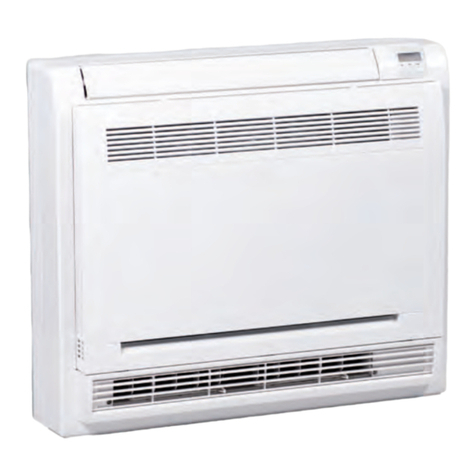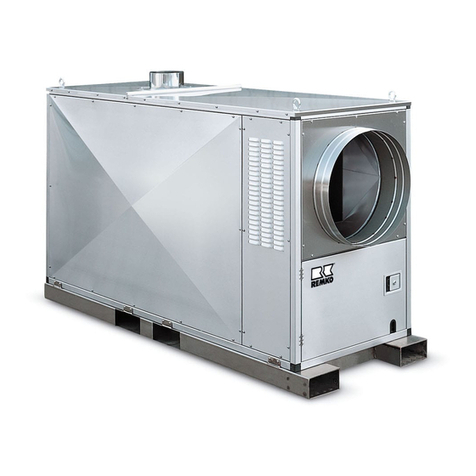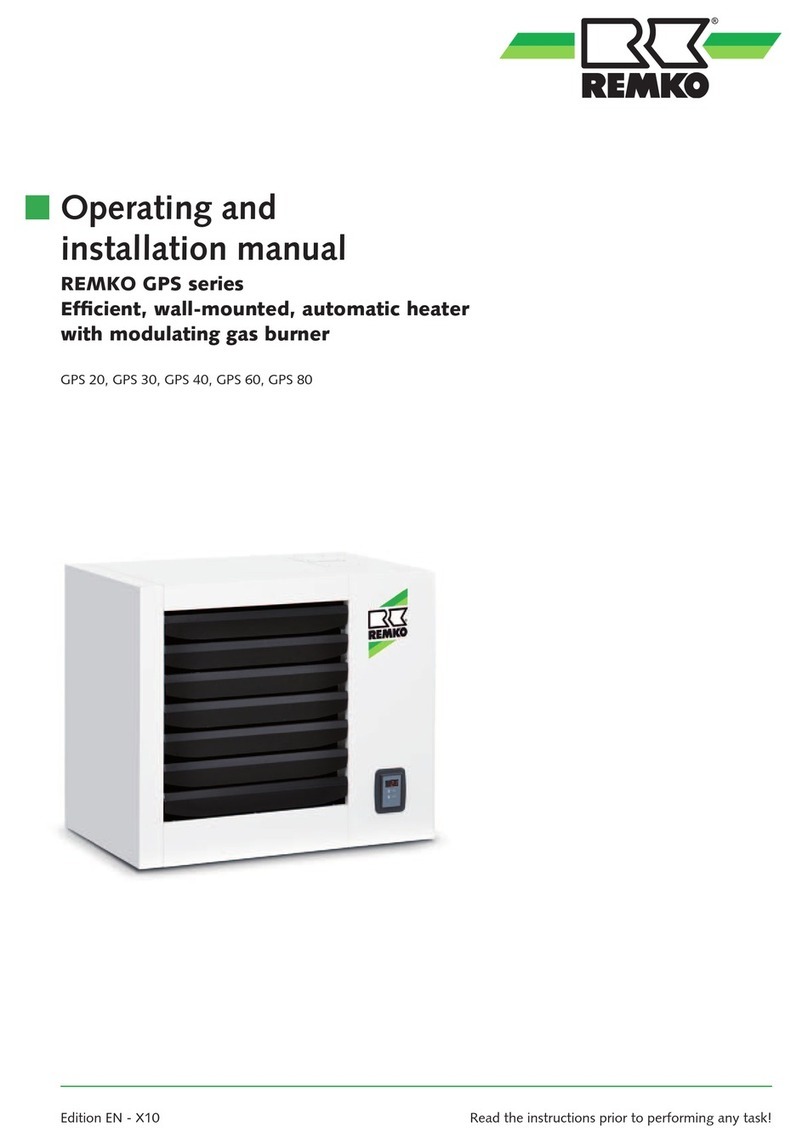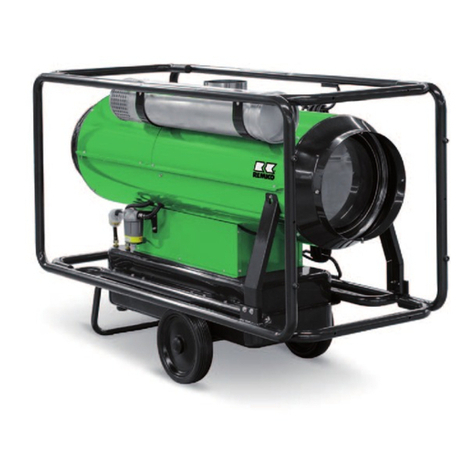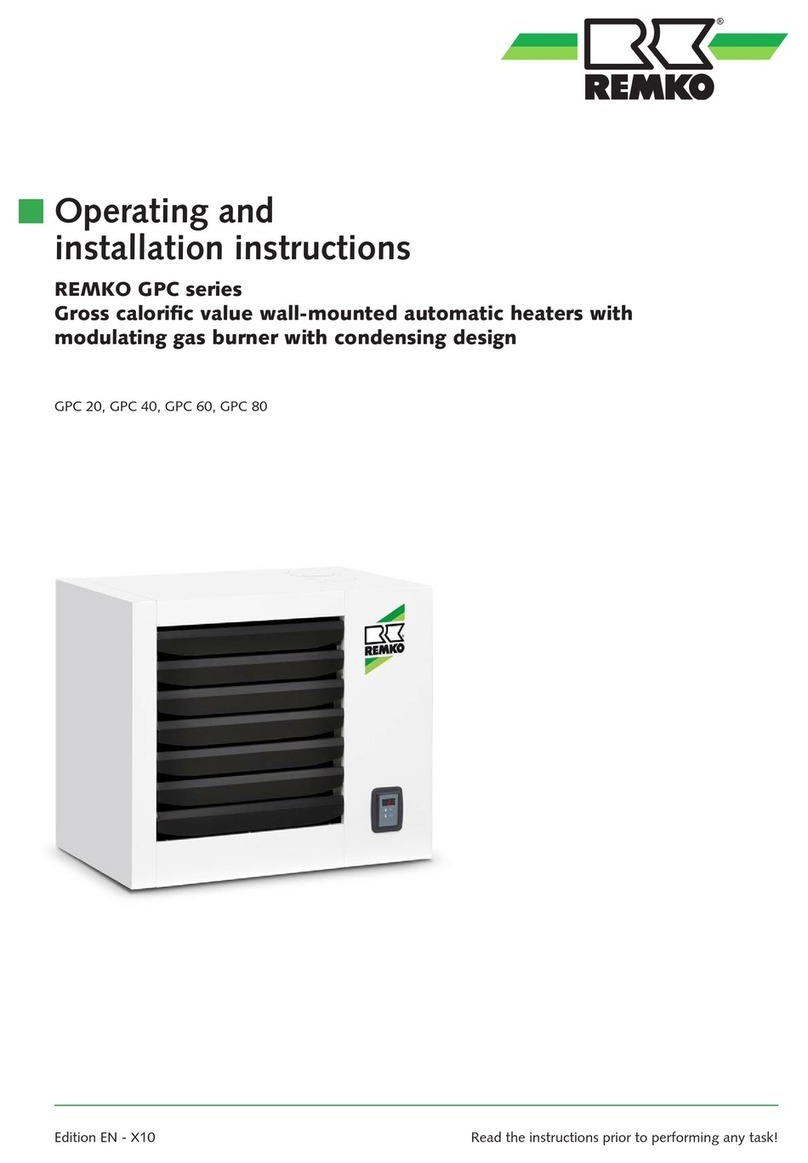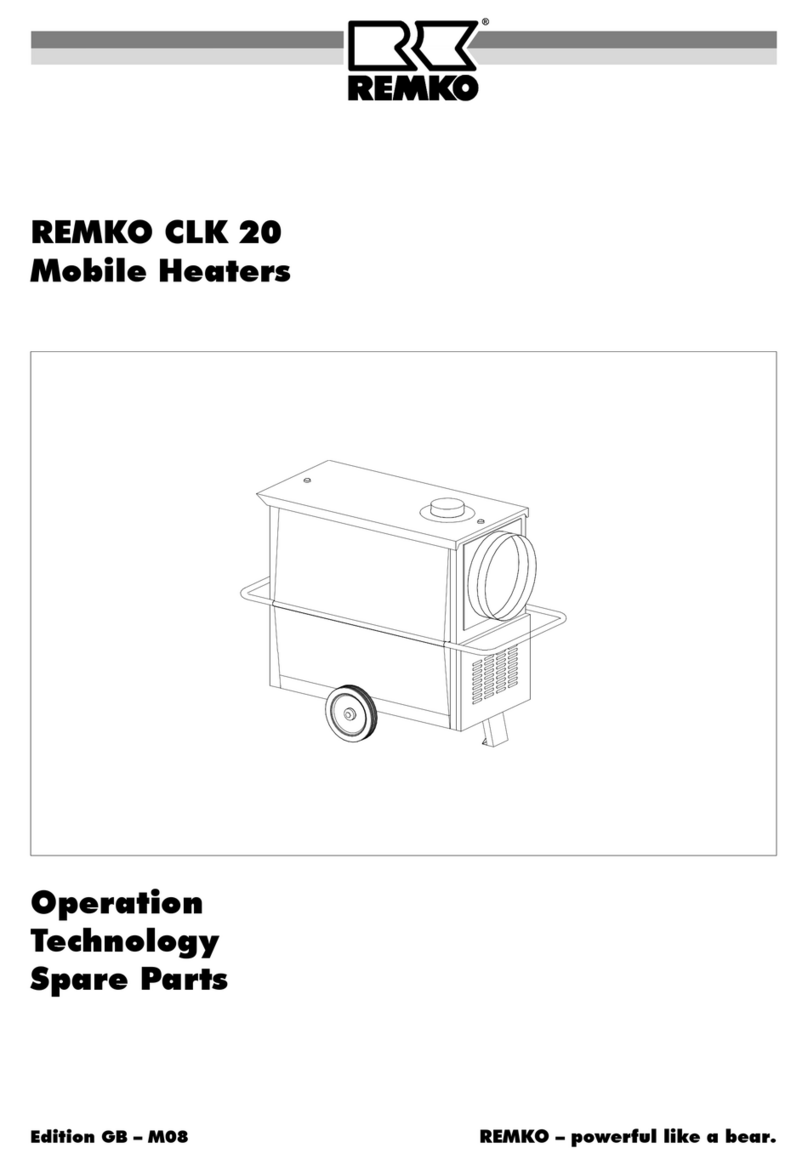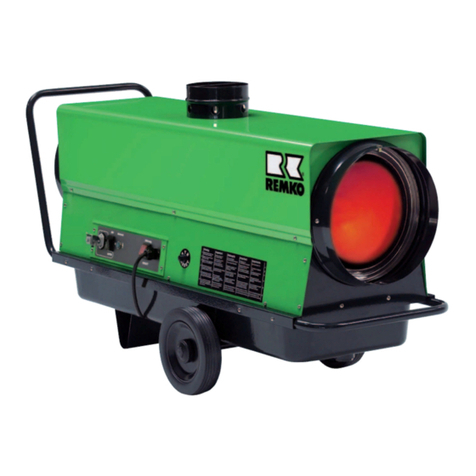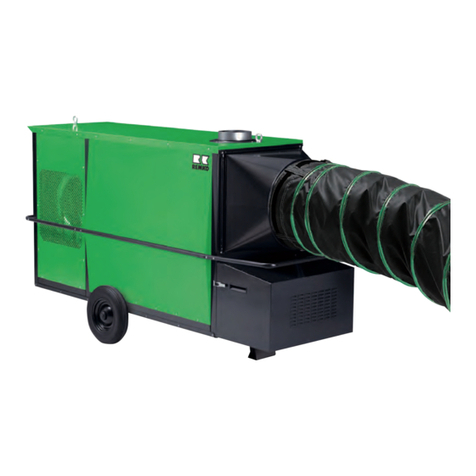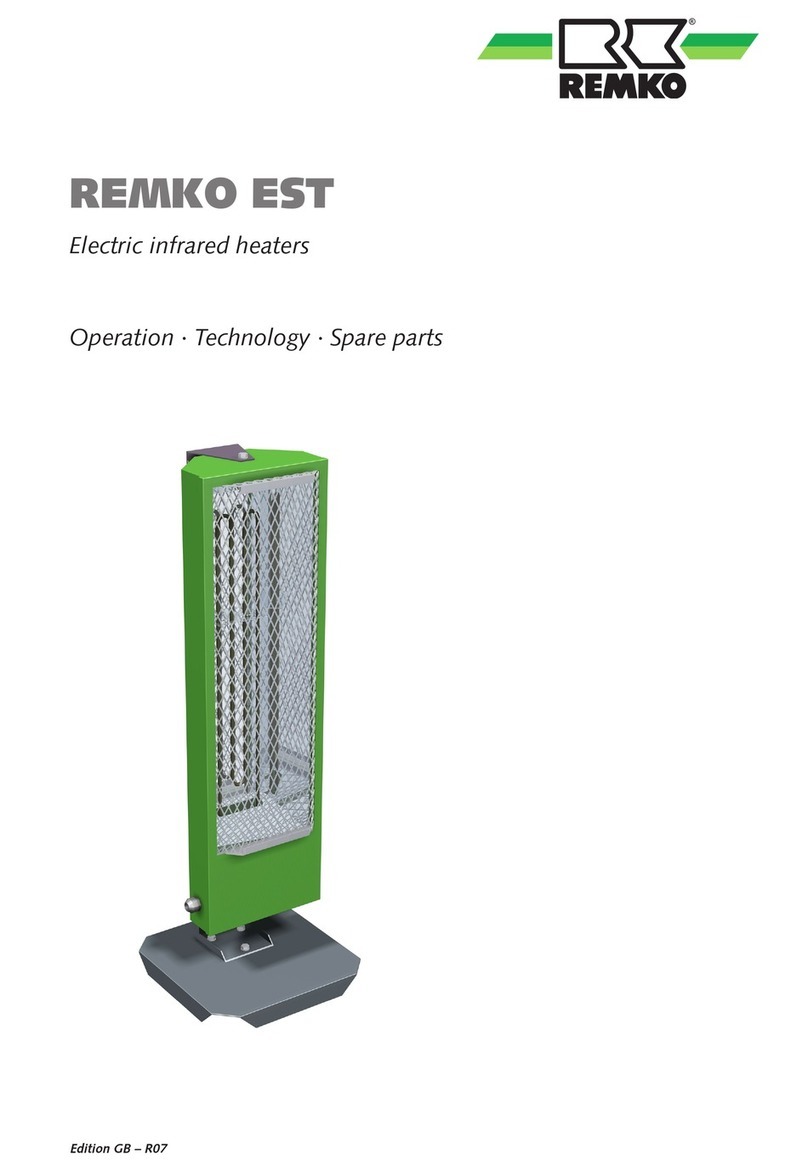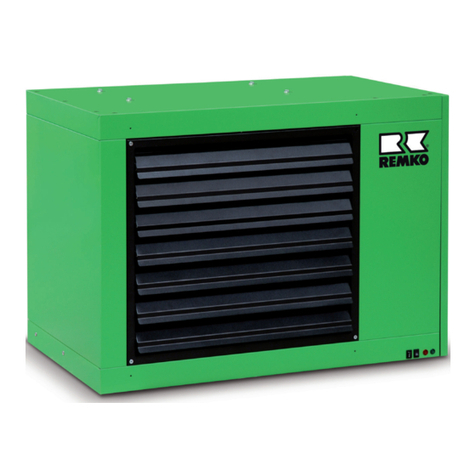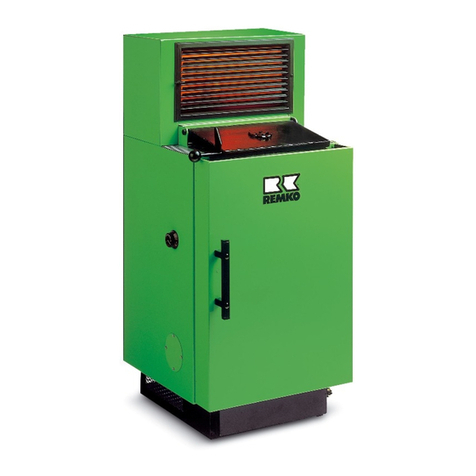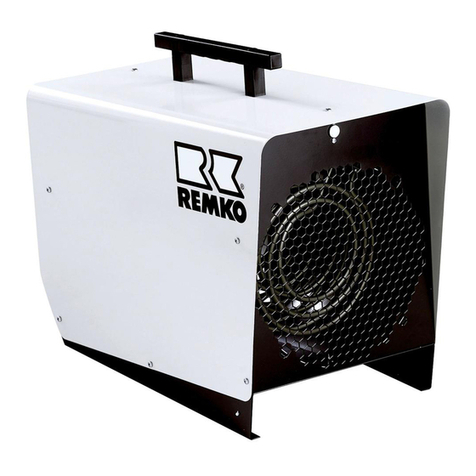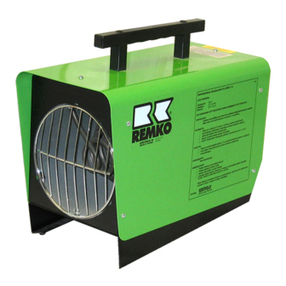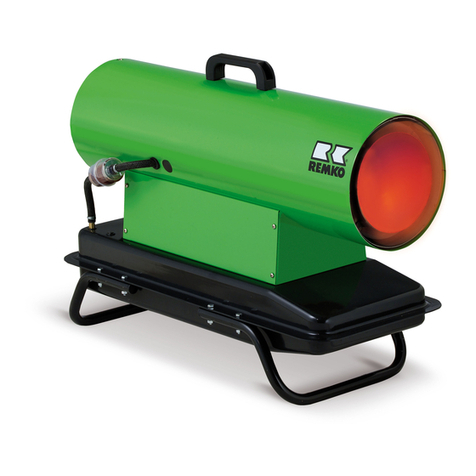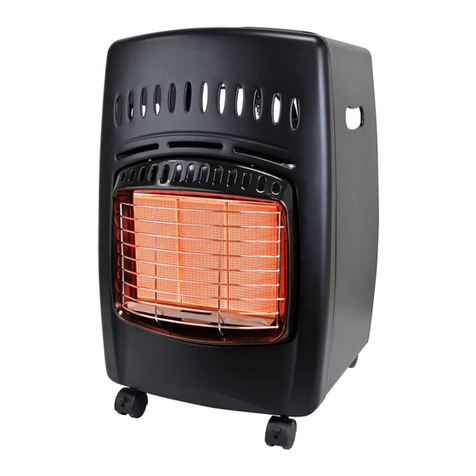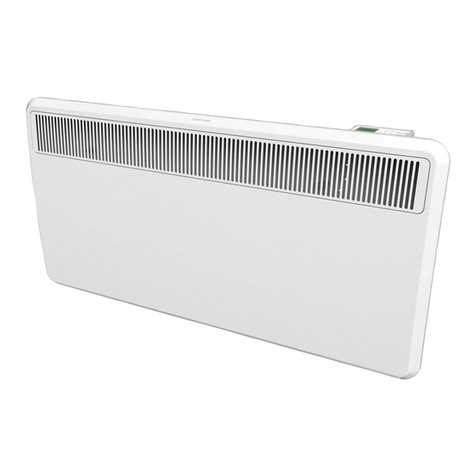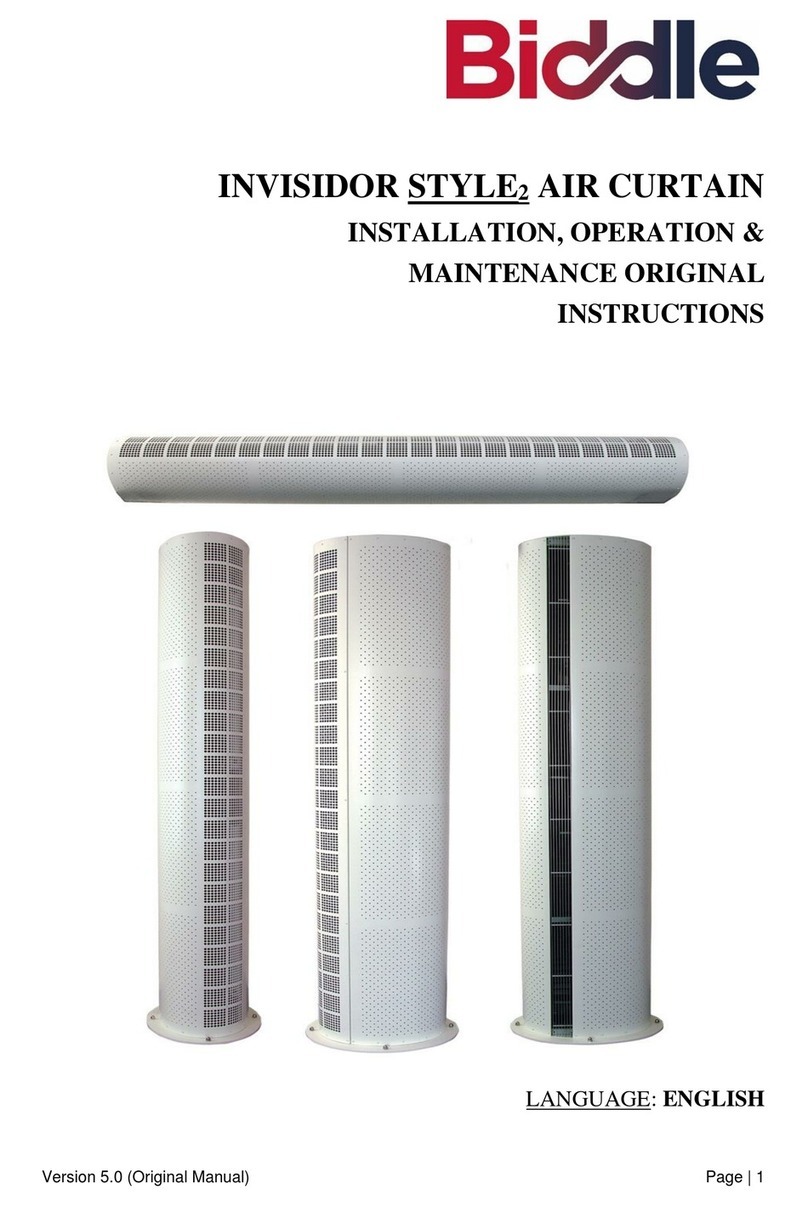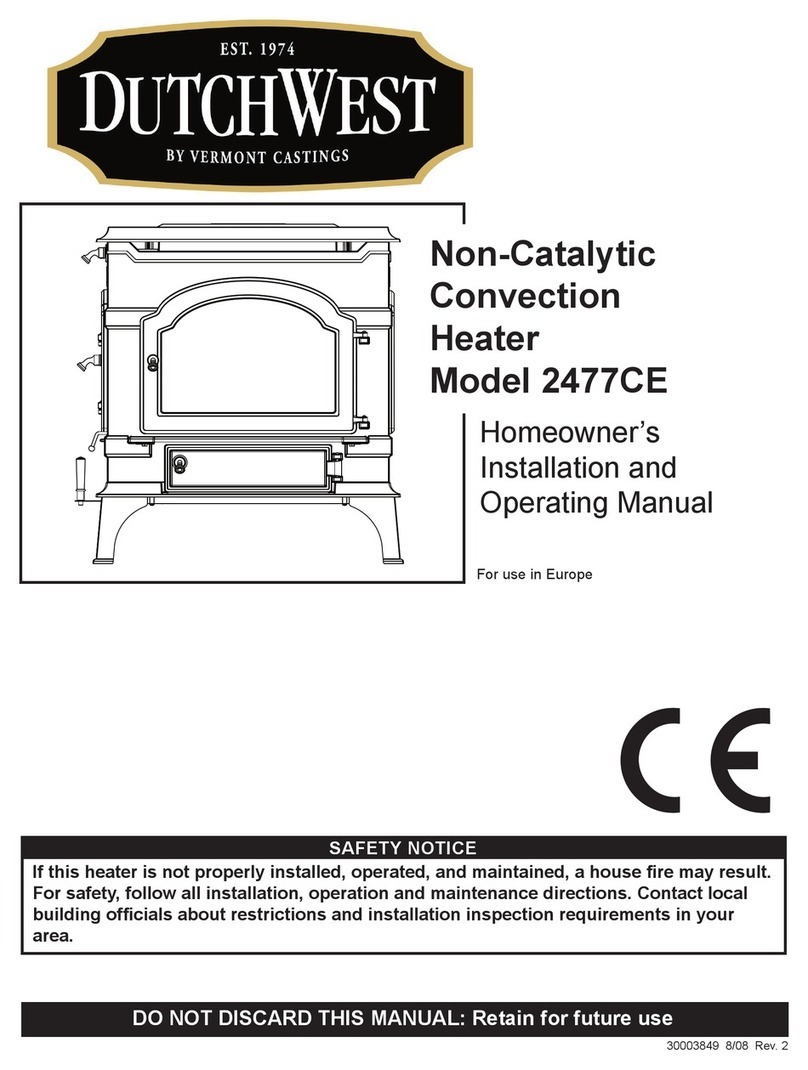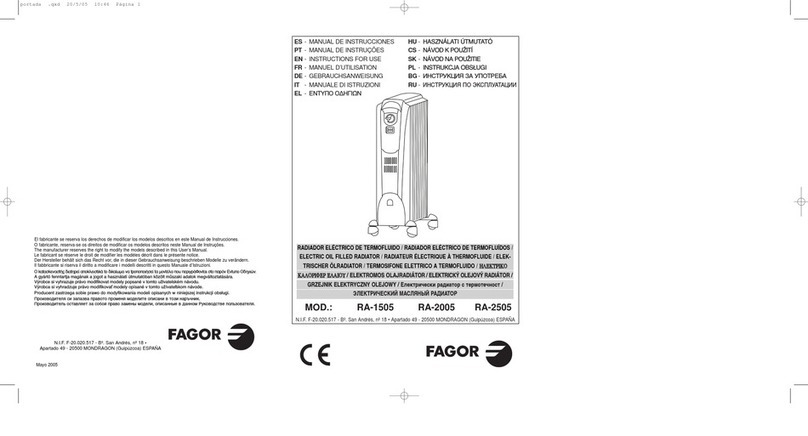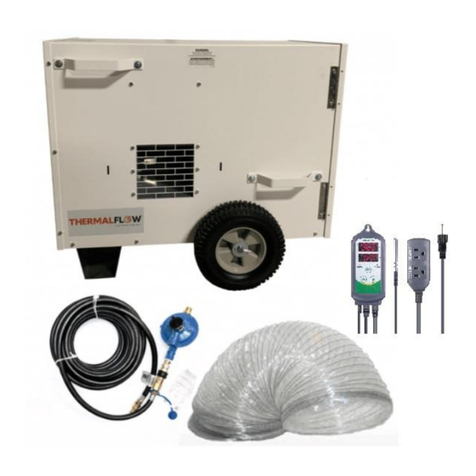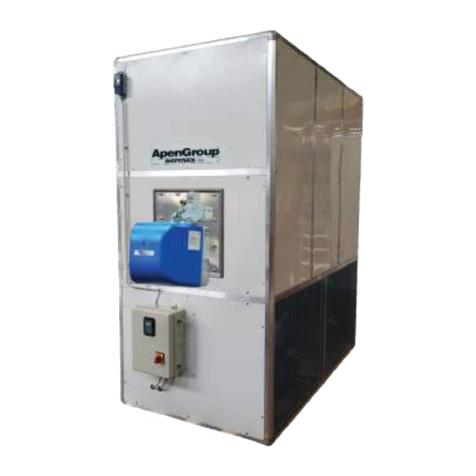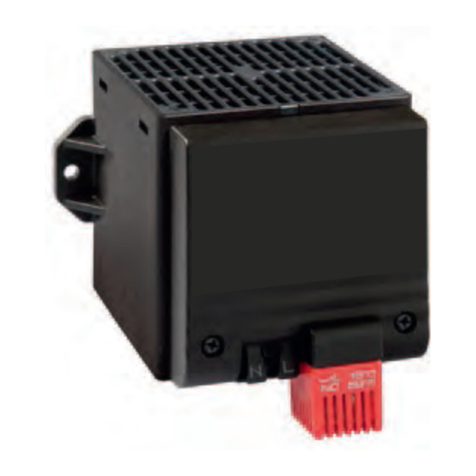
4
Safety Instructions
Please make sure that the relevant local building
and fire protection codes as well as the regulations
of the employer's liability insurance associations
are observed when the units are used.
◊ The units may be operated only by persons who
have been trained in this field.
◊ The unit is to be installed and operated in such a
way as to ensure that the employees are not endan-
gered by waste gases and radiation heat and that no
fire can break out.
◊ The unit may only be installed and operated in
rooms, when the air-rate fed to the unit is sufficient
for combustion.
◊ Without an exhaust system, the unit may only be op-
erated in well aerated rooms. The permanent stay of
persons in the room where the units are installed is
prohibited.
Appropriate prohibition signs are to be fitted at the
entrances.
◊ Mobile fuel reservoirs may be installed only when
the technical rules for combustible liquids are ob-
served.
◊ The unit is to be installed only on a non-combustible
ground.
◊ The unit may not be installed and operated in inflam-
mable and explosive surroundings.
◊ A safety zone of 1.5 m around the unit, as well as a
minimum distance of 3 m from the unit's blower ap-
erture is to be maintained, even in the case of non
combustible objects.
◊ The protective air suction grille is always to be kept
free from dirt and loose objects.
◊ Make sure not to introduce foreign matters into the
unit.
◊ Make sure not to expose the unit to direct water jets.
◊ All electric cables outside the unit are to be pro-
tected from damage (e.g. caused by animals, etc.).
◊ Make sure always to pull the mains plug out of the
mains socket when maintenance and repairs are
carried out.
*On account of the construction type, a fixed-
location device installation is not permissible!
*During the unit’s operation, safety devices may
neither be bridged nor blocked!
Description of Device
The unit is fired directly with heating oil EL or diesel and
can be operated with or without an exhaust-gas con-
nection. It is intended for mobile and fully automatic de-
ployment.
A fuel container is built under the unit and it is equipped
with automatic tank heating, a high-pressure atomizing
oil burner with optical flame monitoring, a low mainte-
nance axial ventilator, a connection cable with plug, a
room thermostat socket and a fourfold filter system.
The unit complies with the basic safety and health re-
quirements of the relevant EU stipulations and is reli-
able and simple to operate.
Working of Device
When the power plug is connected to a power socket,
the automatic tank heater is activated for temperatures
below 10 °C.
When the unit has been switched on or when heat is
required (automatic function with room thermostat) the
supply air fan starts. The fan blows air into and along
the combustion chamber.
When the preliminary ventilation is over, the electro-
magnetic valve opens and supplies fuel to the nozzle.
The fuel, sprayed under high pressure, is enriched by
an adequate quantity of oxygen according to the heat-
ing capacity and ignited by an electric spark. Once a
flame is burning, the automatic burner relay begins
monitoring the flame.
The automatic burner relay controls all unit functionality
fully automatically and monitors them for safety.
After a few seconds hot air is blown out.case of any
troubles, or if the flame is unstable or tends to go out,
the unit is switched off by the automatic burner relay.
The fault indicator warning lamp of the automatic burner
relay lights up. A restart cannot be made before the
manual release of the automatic burner relay.
When the unit has been switched off via the operating
switch or the room thermostat, the supply air fan contin-
ues running for some time to cool down the combustion
chamber and then it stops automatically.
Depending on the required heat rate the function de-
scribed above is repeated automatically in the case of
an operation with thermostat.
*For optimum unit operation, the device should not
be operated at an ambient temperature above 25 °C.
The unit can be used e.g. in the following areas:
- for drying new buildings;
- for point heating of outdoor workplaces;
- for point heating of workplaces in open, non fire-
hazard fabrication rooms and halls;
- for temporary heating of closed and open areas;
- for de-icing of machines, vehicles and non flammable
storage goods;
- for tempering frost-endangered parts.
